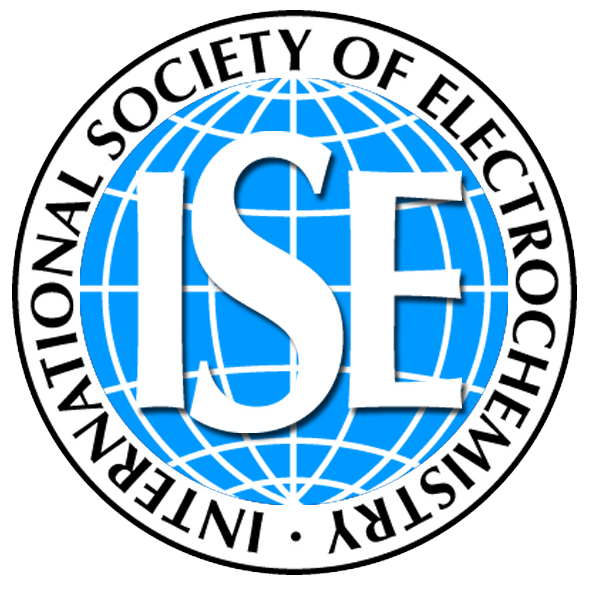- Home
- Venue & Location
- Important Dates
- Organizing committee
- Scientific program
- Accommodation
- Abstract Submission
- Registration
Glasgow, Scotland – Electrochemistry for a sustainable future
Glasgow is Scotland’s cultural powerhouse and one of the UK’s most vibrant cities, bursting with activity and a down-to-earth personality devoted to good times. It boasts an extensive civic arts collection, featuring masterpieces by Dali, Van Gogh, Degas, Renoir, Whistler, and Monet, displayed in many free museums and galleries, including the iconic Kelvingrove Art Gallery and Museum and the award-winning Riverside Museum. The meeting will be at the Scottish Event Campus (SEC), located riverside in Finnieston, halfway between the city centre and the west end, where tourist attractions, hotels, restaurants, and shops are found. The SEC offers flexible meeting and exhibition space, just 15 minutes from Glasgow Airport and close to an on-site train station with a 3-minute journey to the city centre.
Glasgow boasts rich architectural heritage. Its affluent past has left exquisite
Victorian buildings, notably the City Chambers, majestically overlooking George
Square—the city’s civic heart. Glasgow Cathedral exemplifies Scotland’s medieval architecture. Next to the Cathedral is the mesmerizing Necropolis, a cemetery adorned with incredible sculptures and stories. Additionally, Glasgow is the gateway to Scotland, with breathtaking scenery nearby perfect for exploring the West Coast islands, Loch Lomond, highland whisky distilleries, majestic castles, and numerous golf courses.
Glasgow, Scotland, and the UK have a rich scientific tradition, being home to
Faraday, James Watt, Maxwell, Kelvin, and Butler. Scotland boasts a vibrant tech
ecosystem in Life Sciences, Renewable Energy, Data Science, Artificial Intelligence, and Advanced Manufacturing, featuring a strong research base, a growing startup scene, and a supportive business climate. This fosters active engagement between the local scientific community and ISE delegates.
We look forward to welcoming you to Glasgow in 2027!

Venue and Location
The meeting will be held at the Scottish Event Campus (SEC), a major conference centre in Finnieston, Glasgow, Scotland – www.sec.co.uk. Located at the Clyde’s riverside, it is just a short walk away from the 100+ bars and restaurants of Finnieston and within walking distance of Glasgow’s city centre and west end. There is also an on-site train station (3-minute journey to the city centre).
Climate
Glasgow, on Scotland’s west coast, benefits from the Gulf Stream. Average daily
highs in September are 16 °C (62 °F) and lows are 10-11 °C. It receives about 115 hours of sunshine in September, with sunrise around 06:30 and sunset around 20:00.
Transportation
Flights: Delegates can fly directly to one of three international airports surrounding Glasgow, with Glasgow Airport just 15 minutes from the city center and Edinburgh less than an hour away. Currently, there are direct flights from over 165 scheduled destinations to Glasgow and Edinburgh, including London, New York, Paris, Dubai, Toronto, Amsterdam, Barcelona, Berlin, Boston, Brussels, Chicago, Cologne, Doha, Dublin, Frankfurt, Istanbul, Marseille, Madrid, Milan, Munich, Naples, Orlando, Philadelphia, Prague, Rome, Stockholm, Vienna, Warsaw, Washington, and Zurich. Additionally, there are multiple connecting flights (approximately one hour duration) between Glasgow and London Heathrow, Paris, Frankfurt, and Amsterdam daily, providing connections to most major cities worldwide.
Rail: Glasgow is well connected by train across the UK and Europe. We have over 20 trains a day to London. This connection to London also allows delegates to travel by the Eurostar through London St Pancras to Calais-Fréthun, Lille, Amsterdam, Rotterdam, Brussels, Paris, Bourg-Saint-Maurice, Lyon, Avignon, and Marseille.
Important Dates
- Opening date for abstract submission: 1 December 2026
- Opening date for registration: TBD
- Deadline for abstract submission: TBD
- End of early registration: TBD
- Registration deadline for presentation(s): TBD
- (All presenting authors of accepted abstracts are expected to register. Abstracts without a registered presenting author will be withdrawn from the event on TBD)
- Conference begins: 5 September 2027
Organizing Committee
Angel Cuesta (Co-Chair) (Aberdeen)
Robert Dryfe (Co-Chair) (Manchester)
Mark Symes (Glasgow)
Plamen Atanasov (Irvine)
Andrea Russell (Southampton)
Francesca Soavi (Bologna)
Local Organizing Committee
Mark Symes (Glasgow)
Sudipta Roy (Glasgow)
Ieuan Seymour (Aberdeen)
Sunita Dey (Aberdeen)
Edward Brightman (Glasgow)
Stephen Lyth (Glasgow)
Zeliha Ertekin (Glasgow)
Scientific Program
The scientific program offers Pleanary Lectures, Symposis, Tutorials related to the following fields of electrochemistry:
- Electroanalysis, Sensors & Biosensors
- Biological and Medicinal Electrochemistry
- Batteries
- Fuel Cells
- Electrochemistry for CO2 Conversion, Hydrogen Production and Ammonia Synthesis
- Supercapacitors
- Electrochemistry of Nano-materials
- Electrocatalysis
- Electrodeposition and Electroplating
- Corrosion and Passivity
- Electrochemical Engineering and Technology
- Environmental Electrochemistry
- Molecular and Supramolecular Electrochemistry
- Photoelectrochemistry
- Theoretical and Computational Electrochemistry
- Interfacial Electrochemistry
- Spectroelectrochemistry
- Scanning Probe Microscopy Methods in Electrochemistry
- Electrochemical Instrumentation
- Electrochemistry at liquid-liquid intefaces
Accommodation
Glasgow provides a range of accommodations near the SEC, with about 11,000
hotel rooms within 2 miles of the city center. This includes over 1,400 on-site
rooms at the SEC across 8 hotels, around 9,500 within a 15-minute travel time,
and over 2,000 student rooms, many within walking distance.
Abstract Submission
Abstract submission opens on 1 December 2026.
Please return to this page after that date to submit your abstract.
Event registration for participants
Registration opens on TBD
Please return to this page after that date to register.


